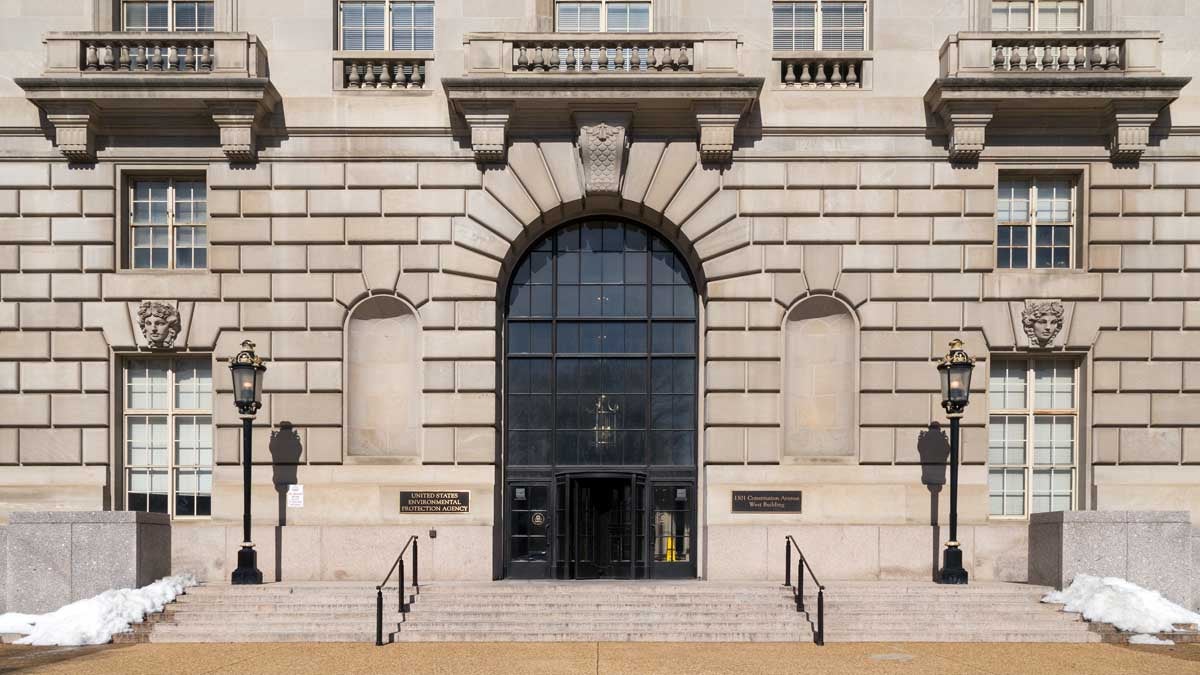EPA plan to tighten ozone standard meets resistance
 Photo via ShutterStock) " title="shutterstock_179489696" width="1" height="1"/>
Photo via ShutterStock) " title="shutterstock_179489696" width="1" height="1"/>
The U.S. Environmental Protection Agency proposes to move the National Ambient Air Quality Standard for ozone from 75 parts per billion to as low as 65ppb. (Photo via ShutterStock)
The Philadelphia region has yet to meet the government’s current clean-air goal, but activists say it is time to tighten air-quality standards even further to protect health.
The U.S. Environmental Protection Agency proposes to move the National Ambient Air Quality Standard for ozone from 75 parts per billion to as low as 65 ppb.
“Parts per billion is basically the really small air pollution that you can’t see, and this is the air that gets into our lungs, and gets into our blood stream, triggering respiratory illness,” said Philadelphia resident Gretchen Dahlkemper, an activist with Moms Clean Air Force. “It can even affect our cardiovascular system.”
Pollutants in the air mix with sunlight to form smog or ground-level ozone.
Tom Schuster, senior campaign representative for the Sierra Club’s Beyond Coal Campaign, said the EPA proposal is the right next step.
“The change is important because the current standard is not sufficient to protect public health. There are numerous scientific studies out there indicating that people experience breathing problems at levels even below 60 parts per billion,” Schuster said.
The National Association of Manufacturers, which has studied the change under consideration, said the cost to businesses and consumers is too high.
“Let me first say that manufacturers strongly support clean air, clean water, everybody does,” said Ross Eisenberg, vice president of energy and resources policy at the trade group.
But he said tightening the ozone rules would lead to new state regulations that, in the future, could shutter businesses.
“So if you are a power plant, you have to do X. If you are a paper mill, you have to do Y,” Eisenberg said. “And here’s the challenge, we’ve generally done most of this already. The low-hanging fruit for ozone is more or less gone.”
Eisenberg says with the regulations already in place, the sector has already helped the country reduce ozone levels by about 25 percent since 1990.
But Schuster says in Pennsylvania there’s still a lot that can be done to reduce smog-forming pollution. The largest source, he said, is coal-fired power plants.
Many of the big power plants in the state have state-of-the-art pollution controls that they aren’t using, he said.
States that haven’t achieved EPA’s goal have years to chart a plan that will lead to compliance. States have a chance to solve their problems first, Schuster said.
“If the state fails over a long period of time, and is not able to justify why that is, then the EPA has some additional authority to come in and impose further limits,” he said.
Philadelphia and Newark, New Jersey, were among the top five cities with the poorest air quality index Monday, according to the Web site AirNow.gov, which monitors pollution.
And the Pennsylvania Department of Environmental Protection forecast Tuesday will be an “orange” air quality action day.
The department advises that young children who are vulnerable to air pollution and older people with respiratory problems, such as bronchitis or emphysema, should limit outdoor activities on “orange” days, which are unhealthy for sensitive groups.
Tuesday’s alert covers Bucks, Delaware, Montgomery, Philadelphia, Chester, Cumberland, Dauphin, Lancaster, Lebanon and York counties.
“If you are breathing bad air, it’s basically like getting a sunburn on your lungs, I would never let my kids out without putting sunscreen on in the summer, I would never let them out with smog in the air,” Dahlkemper said.
Dahlkemper said the Philadelphia region has made significant strides to clean up the air. Still, she said, her 3-year-old daughter has asthma, and her family curtails its outdoor plans when pollution is a concern in Philadelphia.
Eisenberg says the Philadelphia region is currently measuring 84 parts per billion. The current ozone standard is 75 ppb, the new goal could be somewhere between 70 – 65 ppb.
The trade’s group analysis found that a change to 65 ppb would result in $78 billion in lost state gross product between 2017 and 2040 — and 88,000 lost jobs each year.
If you want to weigh in on the government’s plan to tighten the ozone rules, March 17 is the deadline.
WHYY is your source for fact-based, in-depth journalism and information. As a nonprofit organization, we rely on financial support from readers like you. Please give today.

